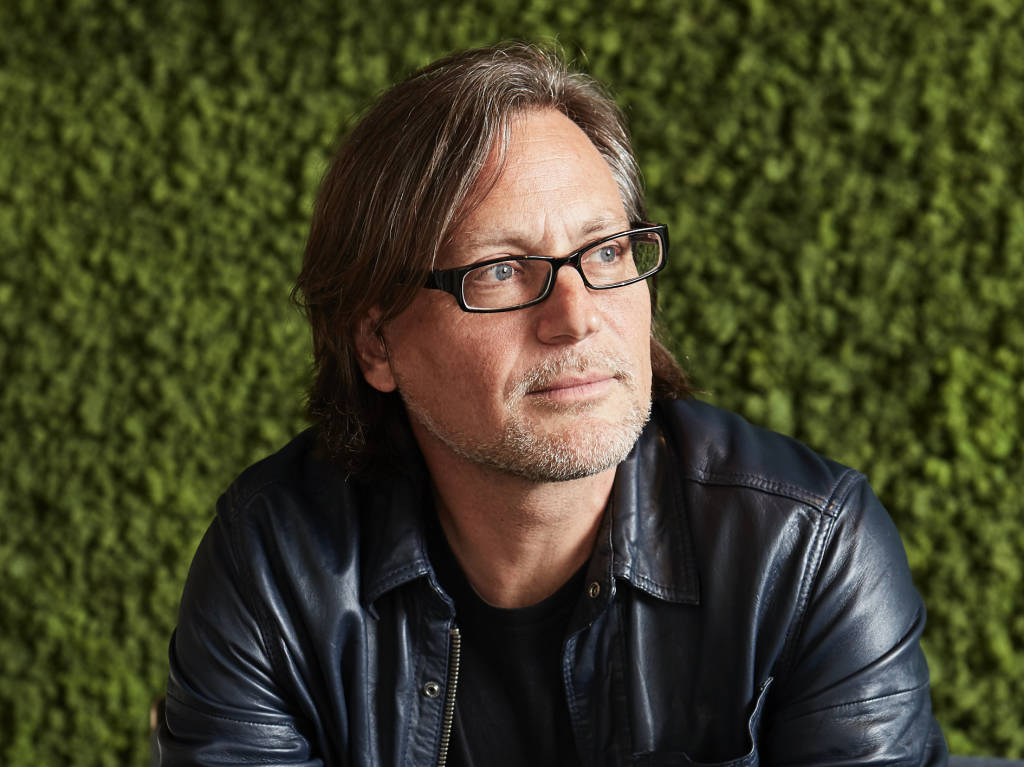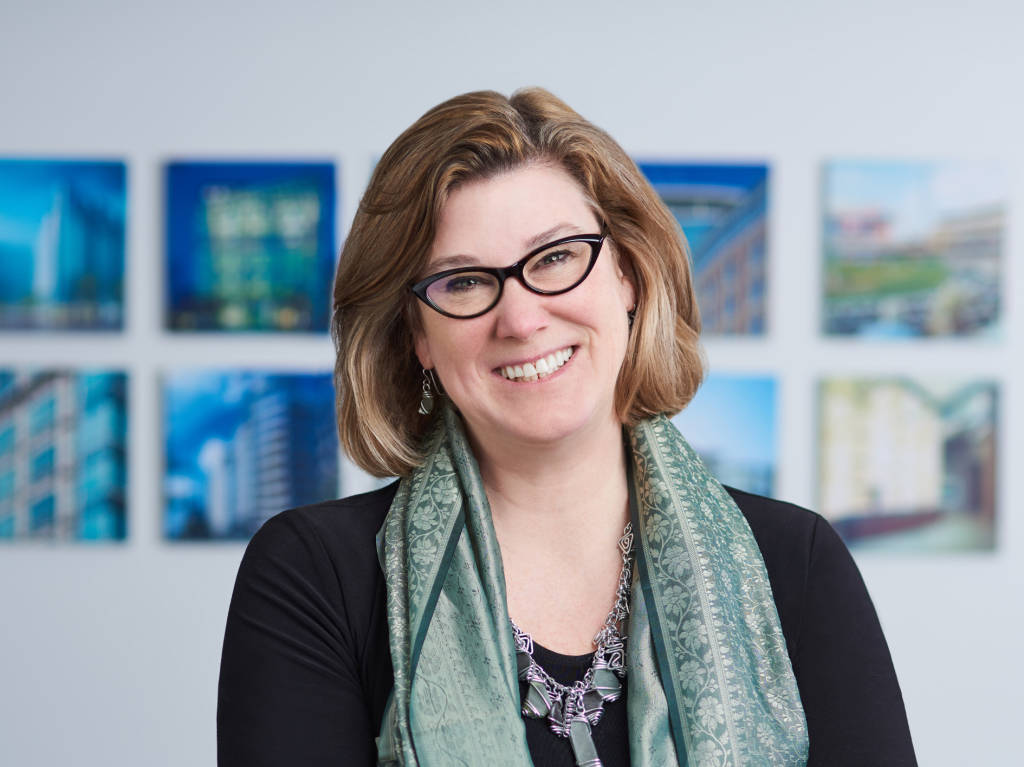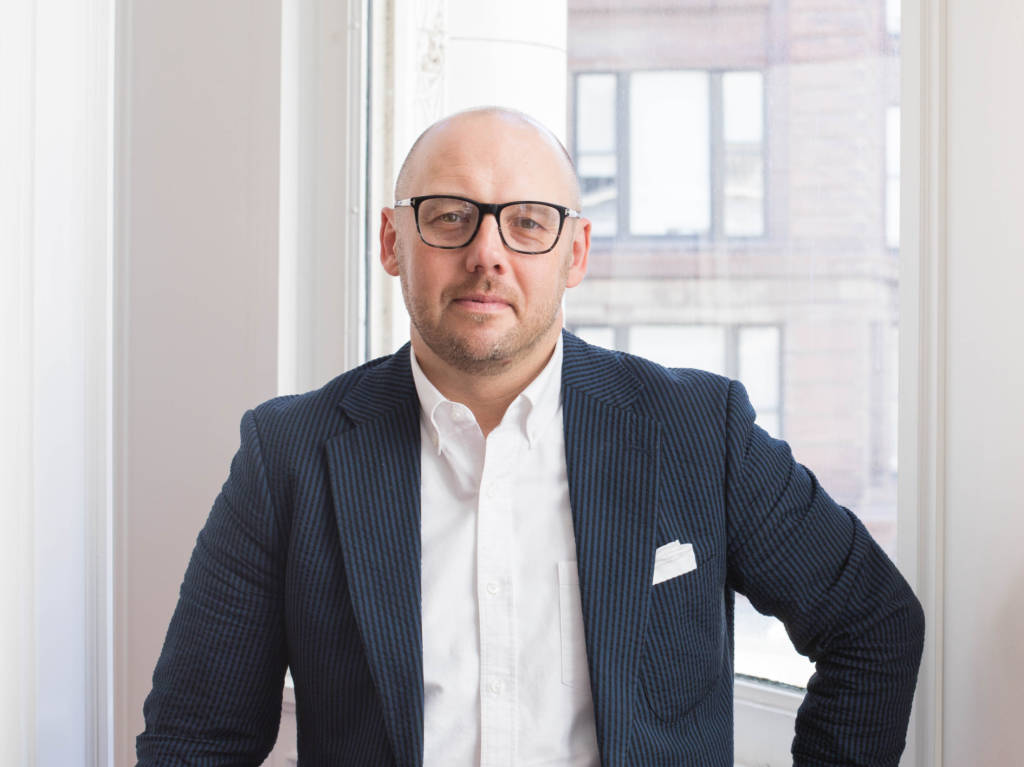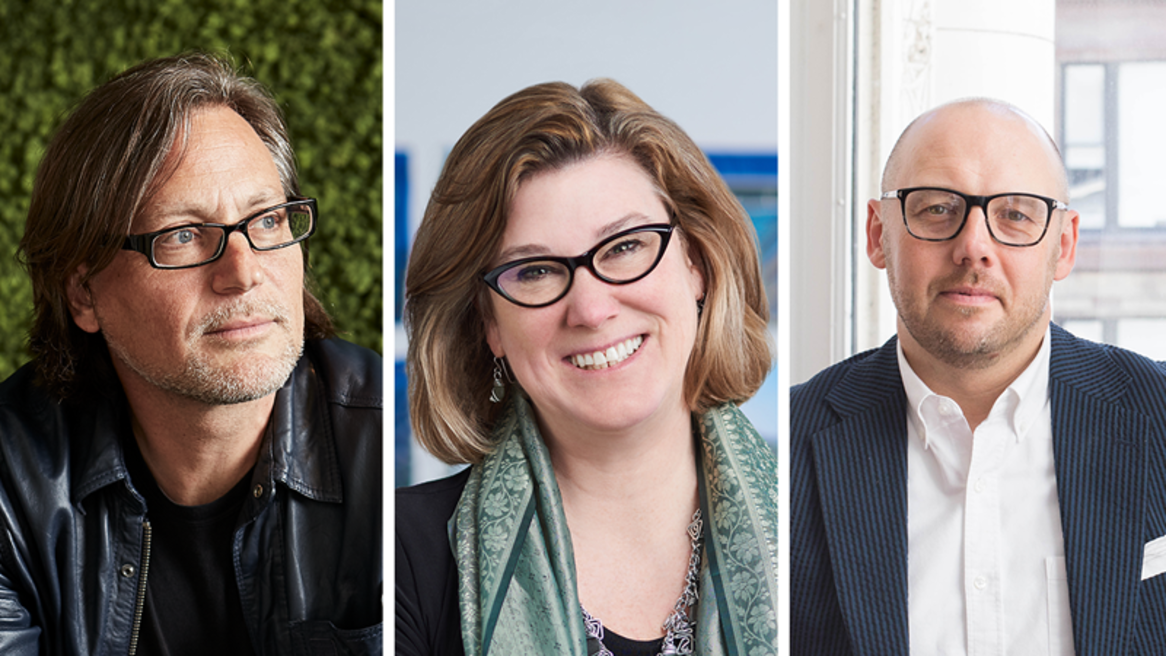Everyone wants to know what the future holds. When it comes to what the office will look like post-pandemic, lead designers at global organizations like Steelcase, HOK and Gensler are fielding phone calls, texts and emails daily.
360 caught up with James Ludwig, vice president of Global Design and Engineering for Steelcase, Kay Sargent, senior principal, director of WorkPlace for HOK and Todd Heiser, co-managing director of Gensler Chicago. They were all still working from home, but had begun to work with their teams around the world to safely welcome people back to the workplace. We spent time talking to each of them about the future of the workplace and the important role designers play in creating it.
Steelcase
James Ludwig’s Perspective

“Designers find clarity in the context of ambiguity. What’s key is to distill things down to their essential nature and position why we need to get back to the workplace at the center of the discussion.”
James Ludwig
Steelcase
Vice President of Global Design & Engineering
FORWARD THINKING
We have to start with why we are coming to the office. Working from home and virtual meetings have limitations. We’re creative and social people and the workplace helps us connect, collaborate and be creative. At the same time, companies need people to come together to shape culture — the way things get done. Without that, organizations will lose their competitive advantage over time.
Of course, front and center is the health and safety of our people. But as we think beyond the now and the near, we’ll be able to move past virus-centric solutions to human-centric solutions. We will look at designing spaces that address people’s cognitive, physical and emotional wellbeing. A colleague of mine says, “Sometimes it takes a crisis for us to realize we’re already living in a different world.” We’ve been struggling with this challenge of what is “work” and what is “life”? For me, it’s just one thing — “life.” And now that is here to stay. Managing and leading that concept will become a key differentiator between a place of work centered on wellbeing or one simply centered on productivity.
KEY INSIGHT
What’s clear out of this great experiment in virtual working, learning and teaching is there are insights that will inform how we move forward. In a way, this crisis is the digital transformation of disruption — touching every business and community. It’s clear decentralization and diversification will be themes in how work morphs and shapes during this and future challenges. The key is adaptability, flexibility and resiliency — the three hallmarks of successful organizations. Anyone not thinking about those things right now is missing the point.
HOK
Kay Sargent’s Perspective

“I’ve been a designer for 35 years. There’s only been three times in my career that I’ve truly been given an opportunity to rethink everything. And, this is one of them.”
Kay Sargent
HOK
Senior Principal, Director of WorkPlace
FORWARD THINKING
We know people are happiest and most engaged when they have choices which is why we believe unassigned seating will still be part of the workplace experience. When you walk into a doctor’s office, if someone tells you to sit in a particular chair even if it is near someone and there are other options available, how would that feel? The office is no different. Technology and more frequent cleaning will give us options and peace of mind. With the technology we have today, you can use your phone to reserve a spot for a touchless experience. When I leave that seat, the system can notify the cleaning crew so it can be sanitized and alert other people that it’s available.
We will absolutely get back together again. We are resilient. When something like this happens, we retreat, assess the situation and slowly work our way back to what the new reality is. But we learn along the way. We need to develop a new hub-home-spoke ecosystem where people can work. The hub may serve as a state-of-the-art engagement center or innovation hub where people gather. It’s supported by people who work from home and remote hubs for distributed teams. That’s when people truly have options and choices, and we can address not only the issues COVID-19 has presented us with, but the other challenges that existed before the pandemic.
KEY INSIGHT
This is a huge opportunity. This may be what shifts the focus from square feet per person to human-centered measurements. This may be what makes us embrace autonomous workplaces, the internet of things, artificial intelligence and robotics, so we can create better, more intuitive hands-free places. Right now, our cars are more sophisticated than our offices. This is a chance for the workplace to catch up and advance if we do it right.
Gensler
Todd Heiser’s Perspective

“I hope companies look deeply at why we build physical spaces and the need to build purpose and meaning into those spaces.”
Todd Heiser
Gensler
Co-managing Director, Chicago
FORWARD THINKING
I’m talking to my clients about not lingering on this current phase, but really thinking about the future. Everything in the next 12-18 months (pre-vaccine) is going to get us to a new place. We’re going to see a series of spaces in the office to support health and wellbeing, and there is a need to merge physical and virtual worlds to retain the part of the office that brings us together for a shared purpose.
I think the world of work will change. I like to think about it in four “P’s” — purpose, potential, perspective and possibility. All organizations that are high performing don’t just talk about purpose, they embed it into their office everyday. One thing I think is really important as we consider why we go back to the office is the notion of tapping into our humanity in a technology-driven world. I love to say physical spaces act like real-life social networks. I believe that notion of purpose, potential, perspective and possibility will be why we go back to the office and we’ll use the workplace as a tool, just like we use our iPhone, video conferencing or a coworking space. All of these are tools in our veritable work toolbox.
KEY INSIGHT
We’re focused on defining the future and creating a workplace that’s truly more resilient. We know while this was an exceptional time, all of these experiences allow us to be better prepared to create spaces that are more resilient and support the whole human. With that in mind, I’m excited for what the future brings and that’s why the world needs design.


